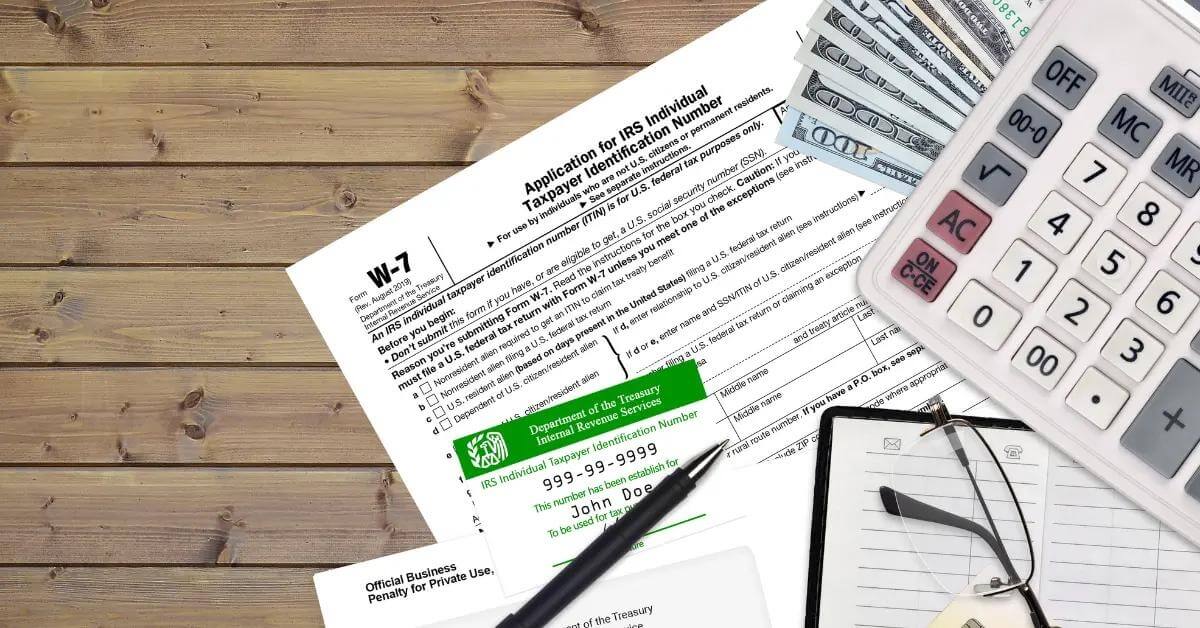The deadline to file your 2021 federal income taxes is April 18, 2022. Does that deadline feel closer than it should? If you’re wondering how to get a little more time, then there are resources available to help.
Today, we’re sharing how to file tax extensions using IRS Form 4868. Read on to discover the step-by-step process, as well as the important dates and information you need to know.
2022 IRS Filing Dates to Remember
The IRS began accepting and processing 2021 tax returns on Monday, January 24. That’s 17 days sooner than they started taking them in 2021. When the second round of stimulus checks ushered in new tax laws in December 2020, the agency had to reprogram and test its systems before opening the acceptance period, which accounted for the delay.
The IRS will continue to accept returns through the 2022 tax deadline of April 18.
This date is three days later than the standard deadline of April 15, because there’s a holiday on that date: the Emancipation Day Holiday in Washington, D.C. While this isn’t recognized as a federal holiday, holidays that occur in the District of Columbia have the same effect on tax deadlines.
Residents in Maine or Massachusetts
Are you a resident of either Maine or Massachusetts? If so, then you have one extra day to file your IRS federal tax return. That’s because April 18 is recognized as Patriot’s Day in those states.
This means that your return is due on April 19, 2022.
Residents Affected by Wildfires and Tornadoes
You will have until May 16, 2022 to file your IRS federal tax return if you were affected by any of the following natural disasters last year:
- The 2021 Colorado wildfires
- The December tornadoes in Illinois, Kentucky, and Tennessee
2022 Tax Extension Timeline
If you file for an extension on your 2021 taxes, then you will need to complete and submit all of the required paperwork by Monday, October 17, 2022.
If your taxes are relatively simple and straightforward, then you may want to go ahead and file as soon as possible. The same goes if you’re expecting a sizable refund and want to to receive it as soon as possible.
Still, there are some taxpayers who will not able to gather all of the paperwork that they need right when the filing season kicks off. For those people, an extension is an attractive resource, but it’s important to understand how it works.
The Basics of Tax Extensions
If you anticipate that you will be unable to meet the IRS federal income tax deadline, then you can file for an automatic extension.
You’ll do this by completing Form 4868, which will give you until October 17 to turn your tax return in to the IRS. Here’s the most important thing to remember, though: When you file an extension, you do not get more time to pay your taxes.
Rather, you only have more time to get the information together to file your return. Even you don’t think you’ll be able to file by April 18, you’ll still need to estimate your tax bill and pay as much as you can by the deadline.
Why do you need to turn in your payment by then? If you don’t, then the IRS could add interest to anything you owe after the deadline has passed. In addition, they can also issue a late-payment penalty, heaping extra costs onto your total.
This is the case even if you’re able to receive an extension. The only potential workaround is to pay at least 90% of your total tax liability by the April 18 deadline. If you do that and file an extension, then the IRS may allow you to pay the remaining 10% when you file your return.
Explaining Reasonable Cause
Worried that you’ll have to explain in detail why you need the extra time? Don’t be.
The IRS doesn’t require you to explain why you’re asking for the extension. They will only press for more details if they deny your request for any reason. In addition, you may also need to provide additional details if you’re requesting a waiver of any associated late payment penalties.
To do so, you’ll need to attach a document to your return (not Form 4868) explaining why you could not pay on time. The IRS will only consider this request if you meet the following conditions:
- You paid at least 90% of the total tax on your 2021 return on or before the regular due date (via withholding, estimated tax payments, or payments made via Form 4868)
- You pay the remaining balance with your return
Tax Extensions For 2020 and 2021
If the thought of keeping up with these dates seems a little complicated, we understand. Federal income tax filing deadlines have fluctuated over the past two years due to the ongoing pandemic.
In 2020, the official filing date moved three months out, to July 15. Then, in 2021, there were initial reports that there would be no extension. However, the IRS opted to move it out slightly.
The new filing deadline for 2021 effectively changed to May 17. To date, the IRS has not made any kind of announcement about extending the April 2022 deadline out, though this may change in the near future.
How to File Tax Extensions in 2022
The important thing to remember is to request by the April 18 deadline, and even earlier if possible. If you wait until after that date has passed, then the IRS could issue you a late-filing penalty. You can receive this penalty even if you intend to request an extension on your tax return.
In all, there are three main ways to request an automatic extension of time to file your U.S. individual tax return. Note that when you’re ready to submit your return, you do not need to attach Form 4868 to the paperwork.
Let’s review each option available to you.
Option 1: Make an Electronic Payment
You do not need to file IRS Form 4868 if you make an estimated tax payment electronically using the IRS’ online payment options. These include:
- Direct Pay
- The Electronic Federal Tax Payment System
- Credit card
- Debit card
You can pay all of some of your estimated income tax due. When you do, simply indicate that the payment is for an extension. From there, the IRS will automatically process an extension on your time to file.
Option 2: E-File
You can e-file your taxes on your own by using tax preparation software. Or, you can work with a team of experienced tax attorneys who can help you navigate each step of the process.
Note that if you are using tax preparation software to complete your taxes, then you may be able to complete this step electronically with just a few clicks. Most programs have the form available for users to access, so all you have to do is follow the instructions on your screen.
With either option, you’ll want to make sure to have a copy of your 2021 tax return with you. Information on these forms will be required for taxpayer verification.
If you want to make a payment when you e-file (even a partial one), then you can select to have the funds withdrawn electronically from your associated accounts. Or, you can send a check or money order to the mailing address shown on IRS Form 4868.
Using IRS Free File
If you have an adjusted gross income of $73,000 or less, then you may be able to prepare and file your federal income tax online using IRS Free File.
This program is the result of an alliance between the IRS and a non-profit organization called the Free File Alliance. Even if you’ve made above the earning threshold, you can still use IRS Free File to file an extension online.
Option 3: File a Paper Copy
If you prefer to fill out a paper-based version of IRS Form 4868, then you can certainly do so. The form is available to download online, and is less than one page long. Make sure to send it via certified mail so you will have proof that you mailed it.
Who Doesn’t Need to File an Extension?
There are certain taxpayers who don’t need to worry about the ins and outs of filing for tax extensions. These include:
- Overseas taxpayers
- Some people affected by natural disasters
- Some members of the U.S. military
Let’s take a look at each of these in greater detail.
Overseas Taxpayers
Are you a U.S. citizen or resident who will be living and working outside of the country when the April 18 deadline occurs? If so, then you may be eligible to receive up a few extra months to file your tax return and pay any amount that you owe.
In most cases, you can receive this extension without having to file IRS Form 4868 to request an official extension. Note that while the official extension request will allow you an addition six months, taxpayers who are out of the country will receive an automatic extension of just two months. You’ll need to file your return and pay any amount due by that deadline.
One important consideration to highlight here: Even if you’re eligible for the two-month extension because you were out of the country on the tax filing deadline, the IRS will still charge you interest on any tax that you owe. That interest will continue to run until you pay the full amount.
People Affected by Natural Disasters
The IRS offers tax relief for U.S. citizens or residents affected by certain natural disasters. Keep in mind that not all disasters will qualify for this support, so it’s important to know the guidelines. You can check here to learn if yours is included.
As mentioned, some of the qualifying natural disasters for 2022 include the severe storms, straight-line winds, and tornadoes in Tennessee. The same conditions also apply to Washington, with the addition of flooding, landslides, and mudslides. Residents of Colorado can also seek relief if they suffered damages from the wildfires and straight-line winds in their state.
Members of the U.S. Military
Not all members of every branch of the U.S. military will qualify to receive an automatic extension on their tax return. Your eligibility will depend on the geographic area where you’re serving, as well as your military duties.
For example, service members who are stationed abroad or in a combat zone during the tax filing season may qualify for certain automatic tax filing extensions. You may also qualify if you were hospitalized due to an injury sustained in one of those areas. You can learn more about those guidelines here.
Benefits of Filing on Time
If you have an extenuating circumstance that requires you to file for a tax extension, then that resource can work to your advantage. However, it does come with some drawbacks. We covered some of those consequences in a previous blog post.
That said, there are perks to getting everything in by April 18.
Most notably, you may be able to receive your refund sooner! While the IRS usually requires around three weeks to process each return, they’ve already warned that they’ll likely need more time this year. This is because they’re still working around the clock to process tax returns from 2020.
In addition to taxpayer filing errors, many of those returns required amending because of confusion around Covid-related tax changes, which resulted in both overpayments and incorrect payments. Plus, staff members are still battling the operational affects of the pandemic, including staffing shortages.
Do You Need to File a Tax Extension?
As experienced and qualified tax attorneys, we know that the various forms, calculations, and fields can be overwhelming to navigate. This is especially true if you need to file an extension. You want to make sure that you’re doing everything correctly to avoid any penalties or extra fees.
We’re well-versed in every aspect of this process, and we know how to file tax extensions the right way. Contact Silver Tax Group today to discuss your tax-related questions and needs.








